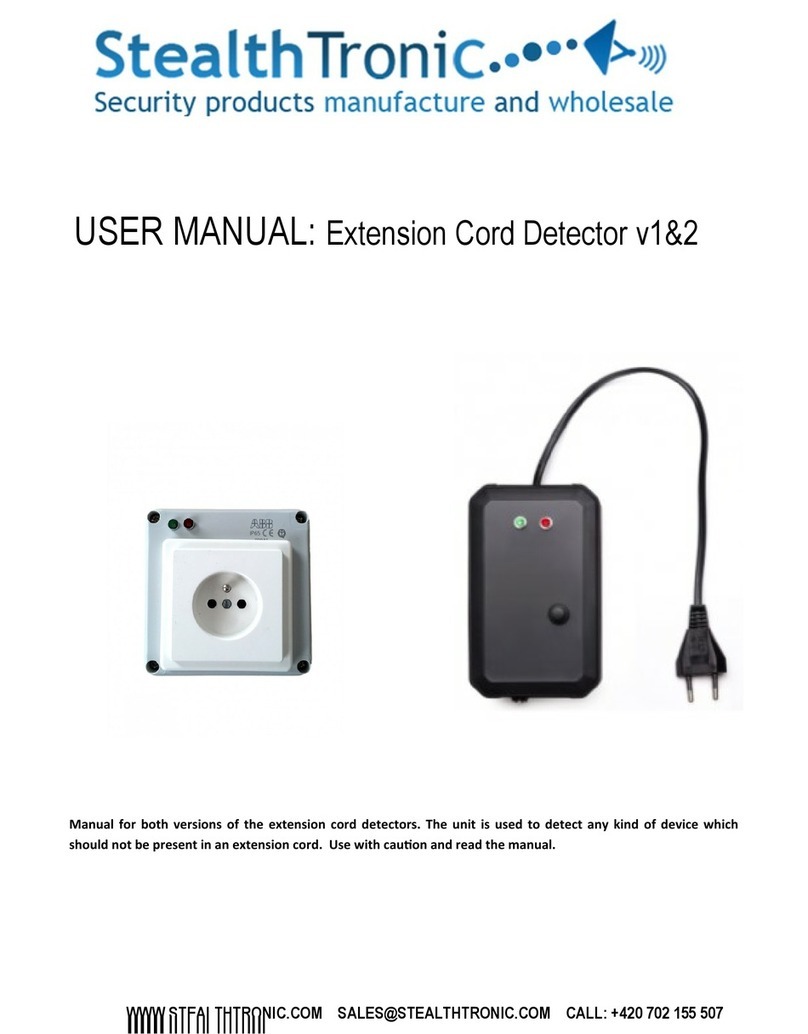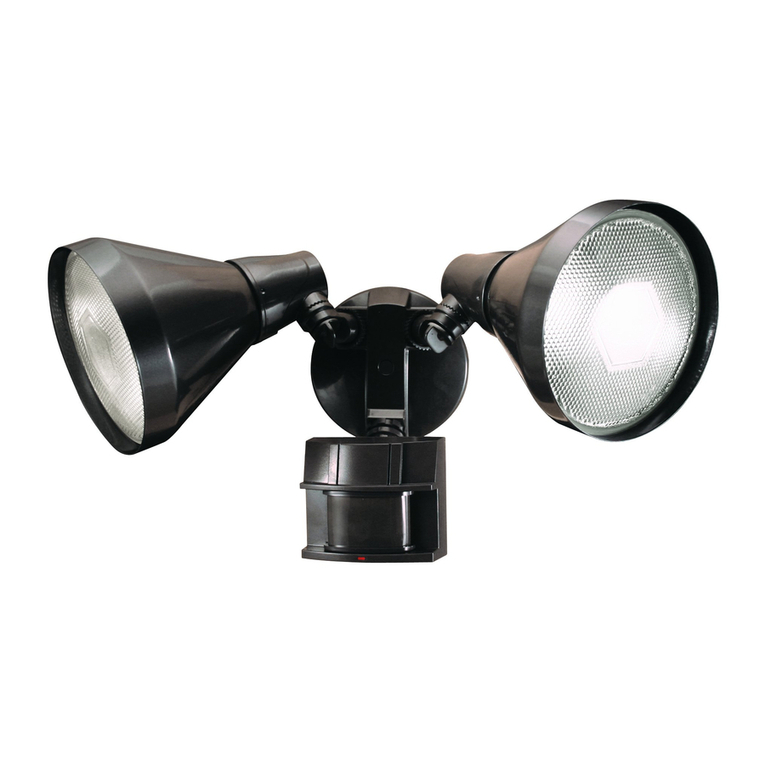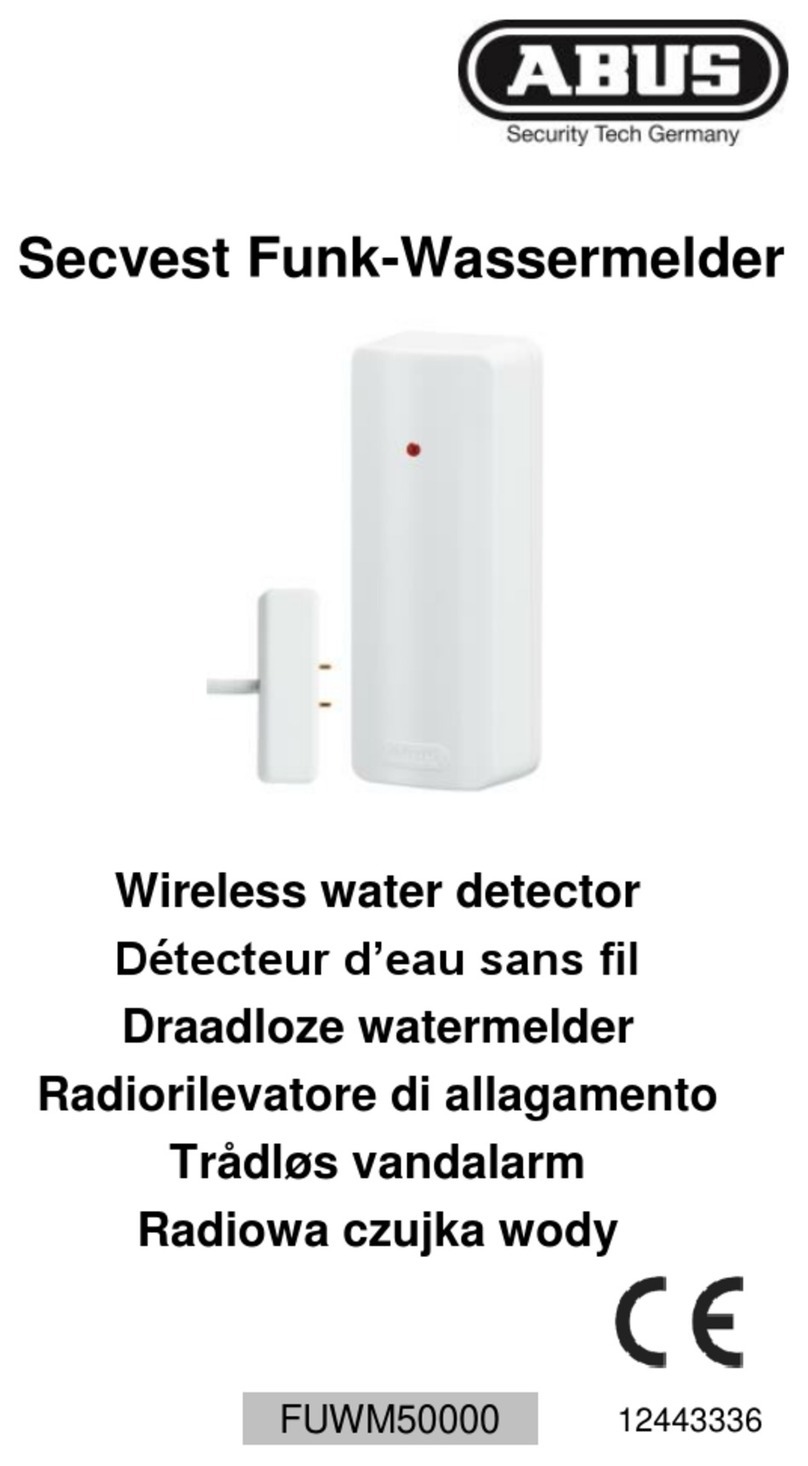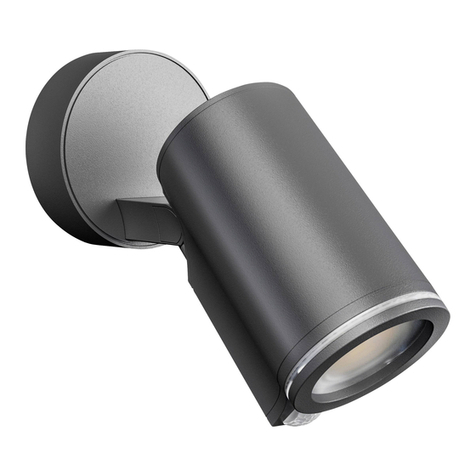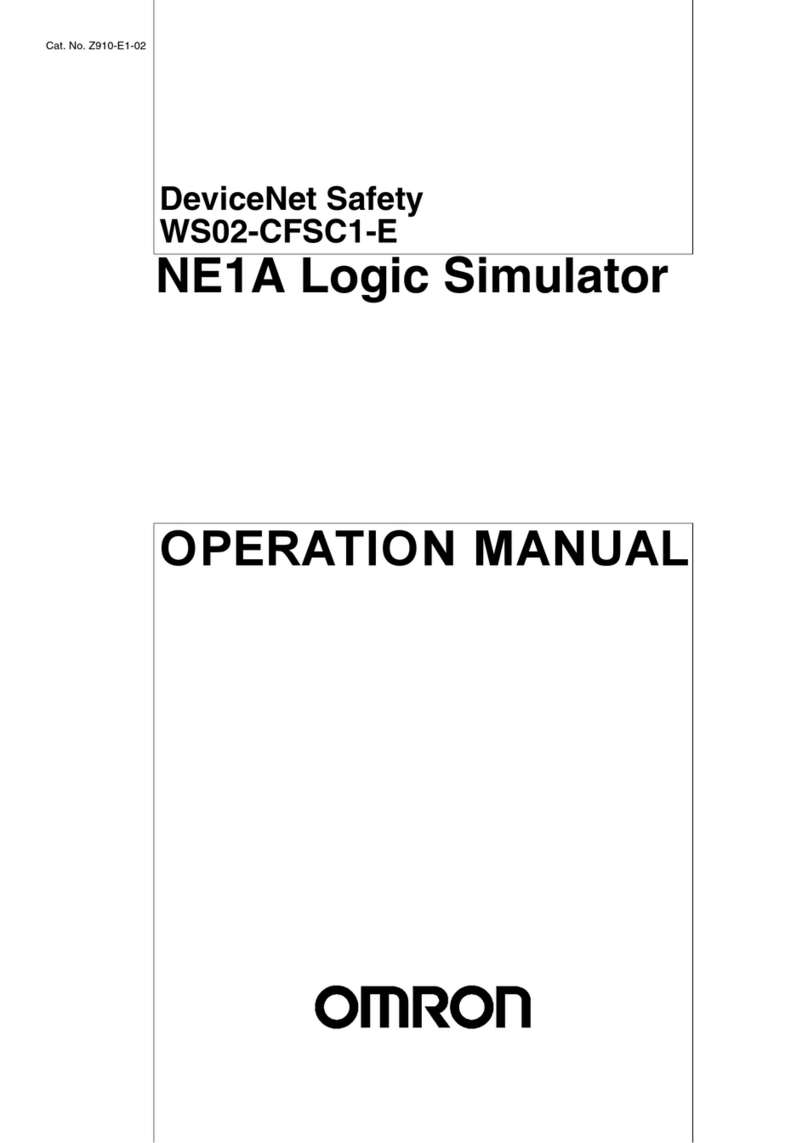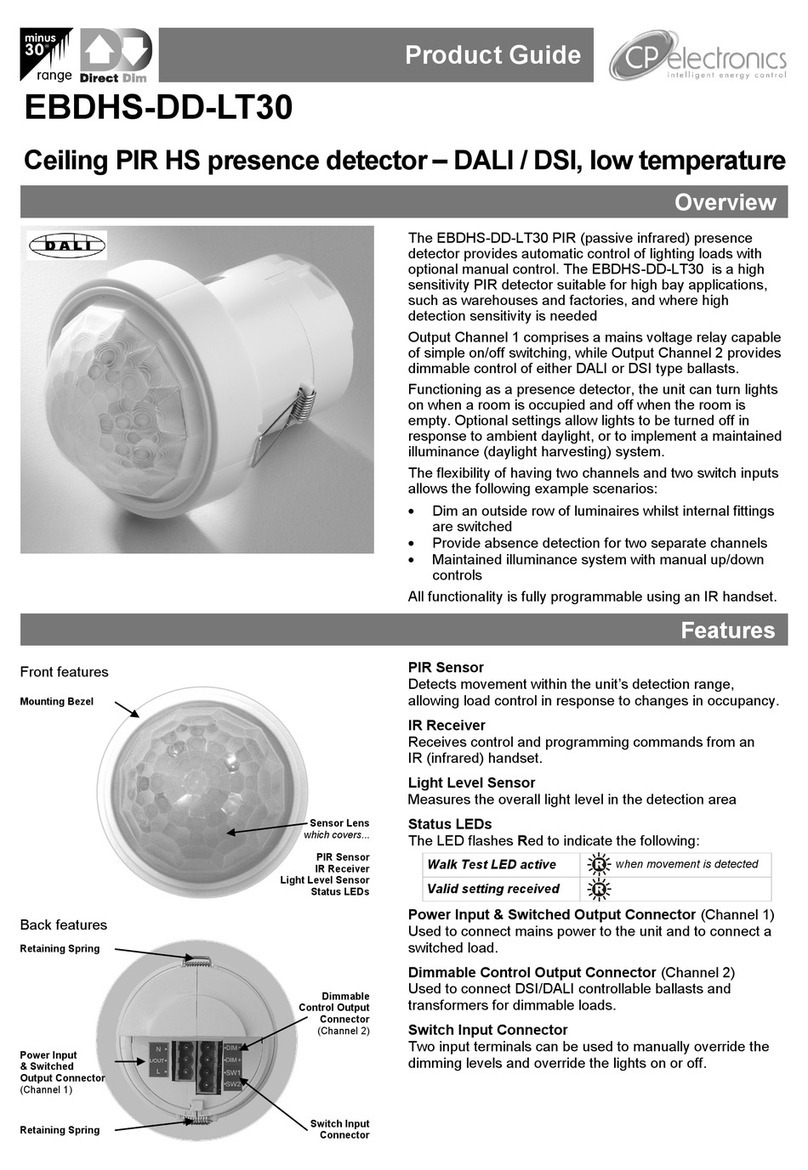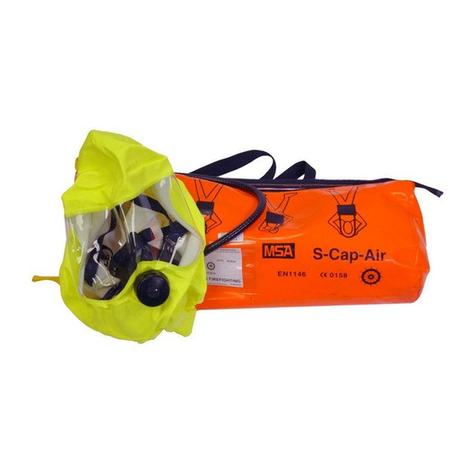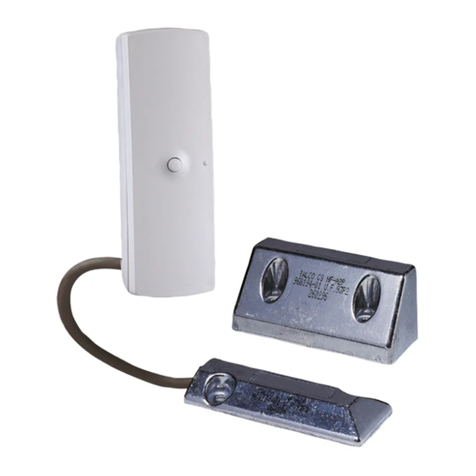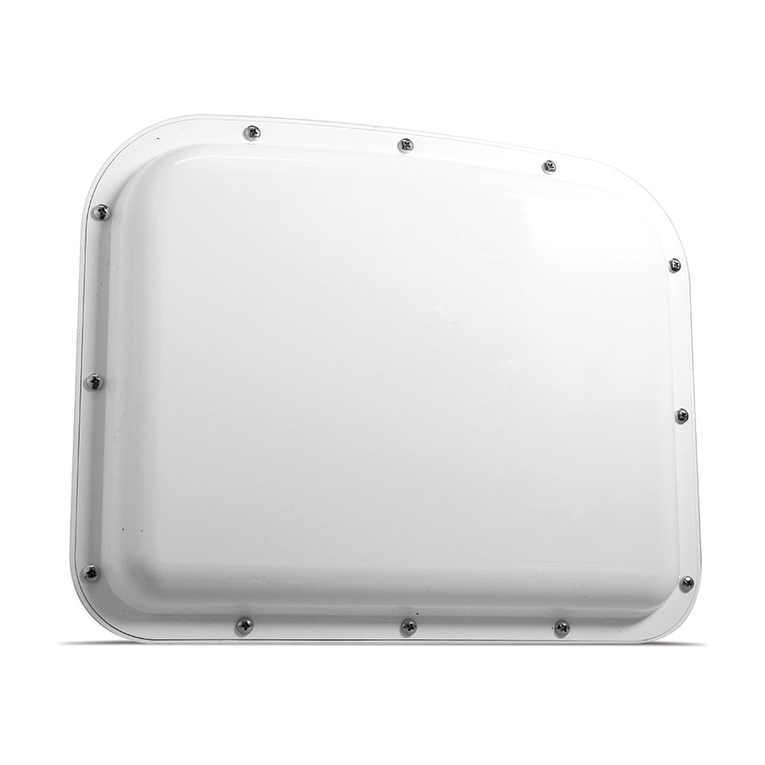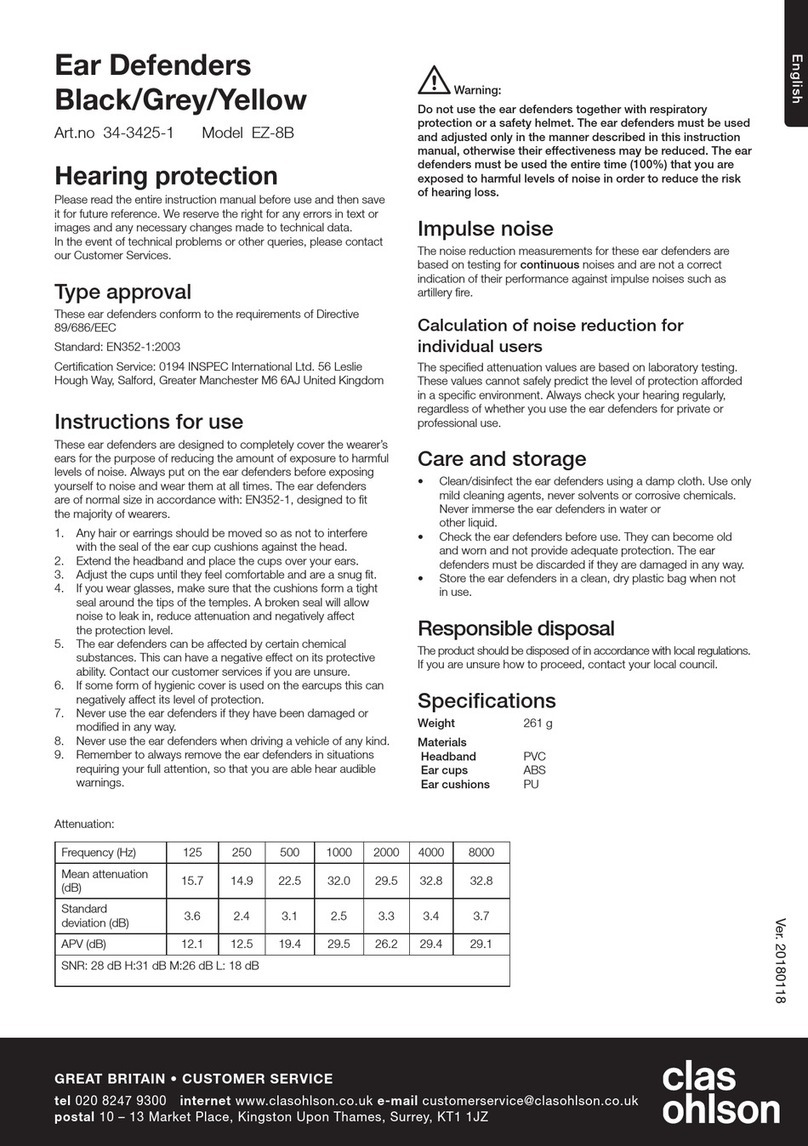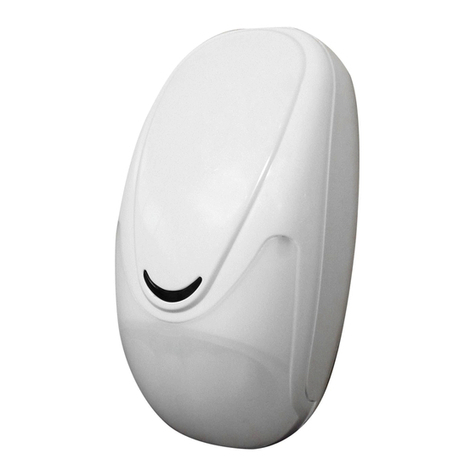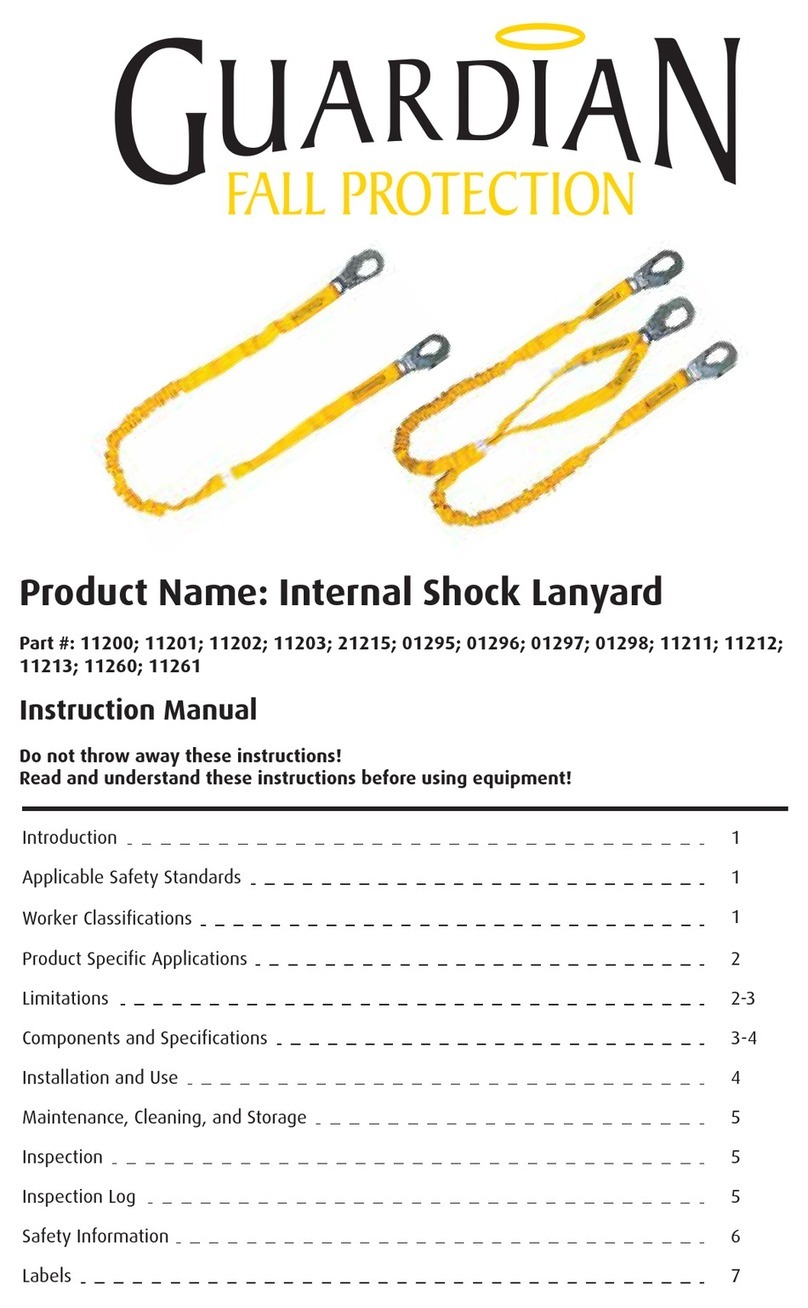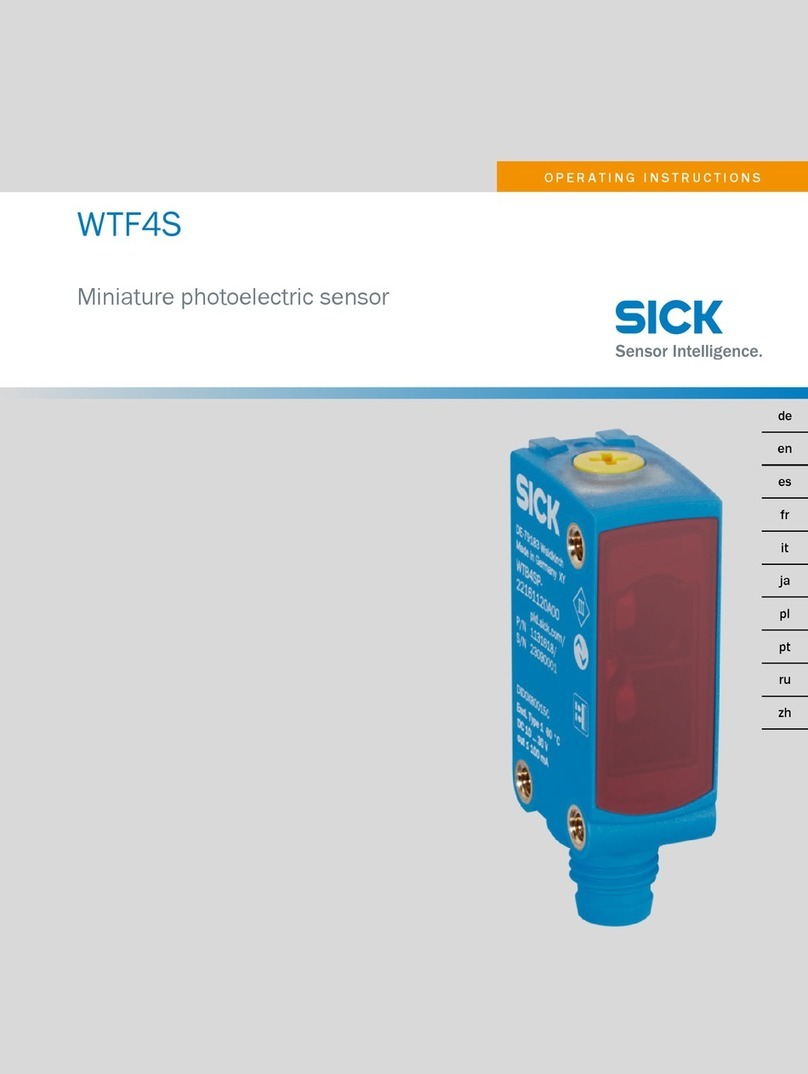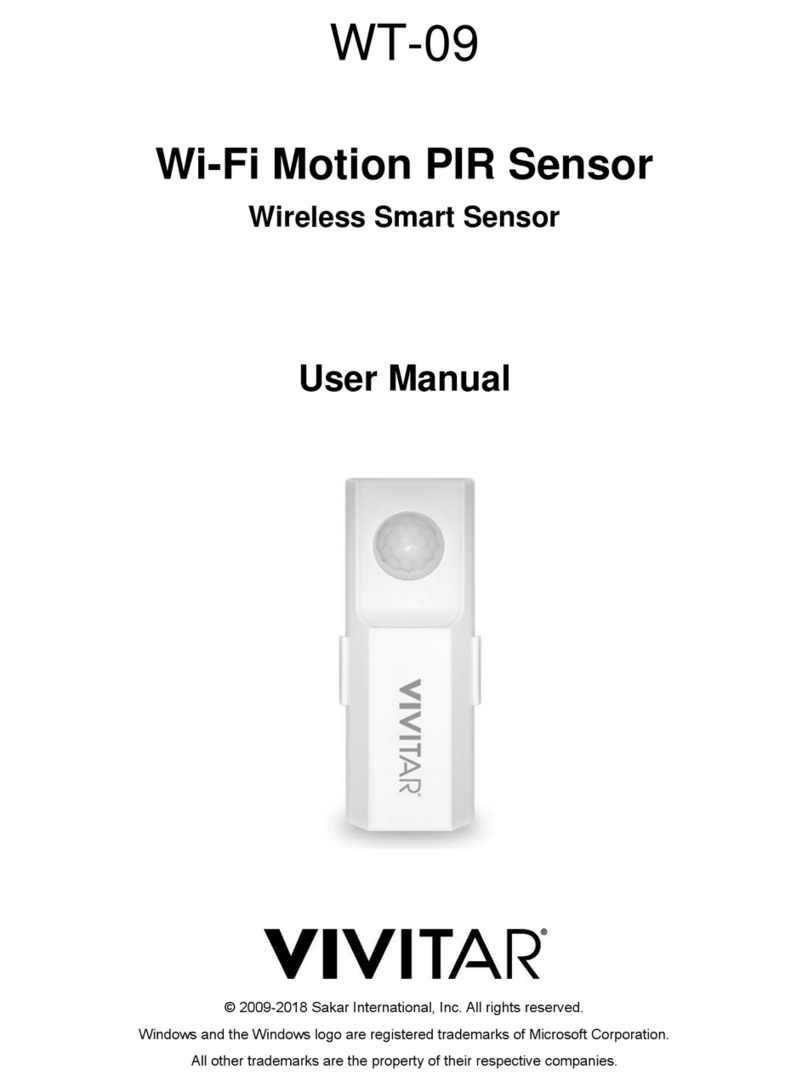Intelbras IVP 2000 SF User manual

User manual
IVP 2000 SF

IVP 2000 SF
Passive infrared sensor
Congratulations, you have just purchased a product with Intelbras quality and safety.
The passive infrared sensor IVP 2000 SF was developed by Intelbras with 100%
digital technology. This sensor features SMD technology, offers efcient detection
with reduced risk of false triggers, and has automatic temperature compensation. It
is compatible with most devices on the market that work on the same frequency and
modulation.

Care and safety
» This product is intended for INDOOR environments.
» Avoid touching the surface of the PIR, if necessary, use a soft cloth for cleaning.
» Do not place objects in front of the sensor. To secure the detection area, avoid curtains, screens, screens, or any object
that blocks the scan.
» Wireless communication technology, when exposed to environments with high power radiation, can suffer interference
and have its performance impaired. Example: locations near TV towers,AM/FM radio stations, ham radio stations, routers,
etc.
» Recommended installation height is 2 to 2.2 meters.
» Do not use the sensor in areas with sudden changes in temperature such as air conditioners and heaters, fans, refrigera-
tors and ovens. Do not expose the sensor directly or to sunlight reections.
» For the use of the articulator, we recommend that the installation be done by a professional installer, as its incorrect use
may affect the sensor’s coverage angle.
» The sensor must be installed where a possible intruder is easily detected, that is, where there is movement across the
sensor’s detection beams.
» We recommend that the sensor conguration be done according to item
5. Conguring the IVP 2000 SF sensor (for
boards in version 4230312/5 and rmware 2.0.0)
and item
7. Conguring the IVP 2000 SF sensor (for board version
4230312/4 and rmware 1.0.2 or earlier).
» LGPD – General Personal Data Protection Law: Intelbras does not access, transfer, capture, or perform any other type of
processing of personal data from this product.

Summary
1. Technical specications 5
2. Characteristics 5
3. Product 5
3.1. Detection range ............................................................................5
4. Installing the IVP 2000 SF sensor 6
5. Conguring the IVP 2000 SF sensor (for boards in version 4230312/5 and rmware 2.0.0) 6
5.1. LED adjustment ............................................................................6
5.2. Sensitivity adjustment of the IVP 2000 SF sensor ...................................................6
5.3. IVP 2000 SF sensor operating mode .............................................................6
5.4. Low battery sensor..........................................................................7
6. Test 7
7. Conguring the IVP 2000 SF sensor (for board version 4230312/4 and rmware 1.0.2 or earlier) 8
7.1. Sensitivity adjustment of the IVP 2000 SF sensor ...................................................8
7.2. IVP 2000 SF sensor operating mode .............................................................8
7.3. Low battery sensor..........................................................................9
8. Homologation 9
Warranty term 10

5
1. Technical specications
Detection angle 115°
Detection range 12 m
Power 9 Vdc battery
Consumption 25 mA
Operating Temperature -10 °C to + 50 °C
Modulation Unsupervised (OOK)
Frequency 433.92 MHz
Baud rate 2 KBps (open source)
2. Characteristics
» 2 levels of sensitivity.
» Economy mode of operation.
» Passive infrared with dual element.
» Low battery sensor.
» Ease of installation.
3. Product
Front cover
Flat Fresnel Lens
PIR
Jumper SENS (JP2)
Jumper LEDS (JP1)
3.1. Detection range
Upper view
Distance (m)
115°
Distance (m)
Side view
2 m ~ 2,20 m
Height (m)

6
4. Installing the IVP 2000 SF sensor
To install the sensor, carefully read the topic
Care and safety
and follow the procedure below:
1. Open the sensor front cover by pressing the sides.
2. With the help of a tool, drill a hole in the back cover for the screws.
3. Insert the 9V battery and position the sensor in the desired location.The IVP 2000 SF does not need to be installed with
an articulator, as it already has a 15° inclination angle.
5. Conguring the IVP 2000 SF sensor (for boards in version
4230312/5 and rmware 2.0.0)
After the sensor is properly installed, make the adjustments according to the information below:
5.1. LED adjustment
The LEDS jumper (JP1) is used to control the LED indication without interfering with the detector. With the switch in posi-
tion L the LEDs are enabled to function normally. With the switch in position D, the LEDs are disabled, that is, they do not
light up. Factory default: L position.
5.2. Sensitivity adjustment of the IVP 2000 SF sensor
The SENS jumper (JP2) is used to control the detection sensitivity. With jumper JP2 in position 1 the sensor provides
maximum sensitivity. With jumper JP2 in position 2 the sensor provides minimum sensitivity. Factory default: position 1.
5.3. IVP 2000 SF sensor operating mode
Once energized, the sensor will operate in the test period for 15 minutes so that the installer can make all sensor positio-
ning adjustments. During this period, at any motion detection, the LED lights up and a trigger is generated.Then the sensor
will operate in eco-mode.
In this mode, the sensor takes a reading of the environment and right after the detection of movement and triggering it
goes into sleep, which can last for a period of 30 seconds (environment with little movement) up to 2 minutes (environ-
ment with a lot of movement). During this period the indication LED is not activated and no new triggers are generated,
as a notication has just been sent to the switch. After the sleep time, the sensor is monitoring the environment until
detecting a new movement.
Trial
period
15 min
Period of
stabilization
Time the sensor remains on
Economy Mode
30 sec - 2 min
After inserting
the battery, the
LED is blinking
and there is no
detection.
At any detection
the LED lights up
and generates a
trigger.
After detecting the rst
movement, the sensor turns on
the LED, triggers and enters the
sleep period.
During this period the
LED does not light and
no new triggers are
generated.
After the
hibernation time,
the sensor returns
to detect and
generate triggers
in the central,
starting the cycle
again.
» Advantage of eco-mode: this ability to learn from the environment, means that in places with high degrees of movement,
periodic and non-continuous shots are generated, in turn, saving battery power.

7
5.4. Low battery sensor
The IVP 2000 SF sensor controls the battery level. If it is critical (7V), it will send the information to the control panel. If low
battery signaling is enabled in the control unit, the information is sent during the trigger.
Note:
consult the control panel manual to verify compatibility with low battery signaling and supervision.
To make the desired adjustments follow the steps below:
1. Set the jumpers to the desired settings.
2. Perform a trip as the jumper update will occur after the next shot.
Note: do not register the sensor in the control panel during the stabilization time, wait for it to start working in continuous
mode.
To register the sensor code in the alarm control panel, check the procedure in the manual of the used alarm control panel
and trigger a trigger by moving in front of the sensor to complete its registration.
Jumper LEDS (JP1)
Position Condition
DLEDs off
LLEDs on
Jumper SENS (JP2)
Position Condition
1Maximum sensitivity
2Minimal sensitivity
6. Test
Once installed and energized, walk in the area to be protected simulating a possible intrusion. Observe if the sensor is
able to detect your movements during the journey, by lighting the lens. Adjust its sensitivity if necessary or reposition the
sensor installation.
If the alarm control panel used is Intelbras, put it in test mode, this way it will not be necessary to observe the LED, as the
control panel will indicate the sensor’s operation through siren beeps.

8
7. Conguring the IVP 2000 SF sensor (for board version
4230312/4 and rmware 1.0.2 or earlier)
LED adjustment
The LEDS jumper (JP1) is used to control the LED indication without interfering with the detector. With the switch in posi-
tion L the LEDs are enabled to function normally. With the switch in position D, the LEDs are disabled, that is, they do not
light up. Factory default: L position.
7.1. Sensitivity adjustment of the IVP 2000 SF sensor
The SENS jumper (JP2) is used to control the detection sensitivity. With jumper JP2 in position 1 the sensor provides
maximum sensitivity. With jumper JP2 in position 2 the sensor provides minimum sensitivity. Factory default: position 1.
7.2. IVP 2000 SF sensor operating mode
After inserting the battery, the LED will blink for approximately 20 seconds (stabilizing time and performing self-test).
When it goes off, the sensor will operate for 10 minutes in Continuous mode (immediate ring) so that the installer can
make all adjustments to the position of the sensor. After the time of 10 minutes the sensor will work in Economy mode.
When the sensor triggers while in Economy mode, it is necessary to wait a period of two minutes without movement for
it to detect again.
Advantage of Economy mode: In environments where there is a lot of people, the Economy mode will reduce the excessive
consumption of the battery. For a better understanding of the Economy mode, observe the following timeline:
10 min
Does not
detect
Stabilization
Mode
20 sec
Continuous
mode
Time the sensor remains on
Economy mode
2 min
After inserting the
battery, the sensor is in
stabilization mode and
the LED is blinking.
Note: do not register the
sensor in the control
during this period, wait
20 seconds for the
sensor to enter
continuous mode.
In this mode, the
sensor detects the
rst movement and
generates a trigger,
but it goes into
hibernation and
returns to detect it
after two minutes
with no movement
in place, during the
hibernation period
the LED does not
light up.
In this period of
2 min, if there is
movement in the
place, the sensor
waits for the last
movement to
start counting
the two minutes.
After the 2 min
of the last
movement of the
place, the sensor
returns to detect
and generate a
trigger in the
control unit.
In this mode
any detection
LED lights up
and triggers.

9
7.3. Low battery sensor
The IVP 2000 SF sensor controls the battery level. If it is critical (7V), it will send the information to the control panel. If low
battery signaling is enabled in the control unit, the information is sent during the trigger.
Note:
consult the control panel manual to verify compatibility with low battery signaling and supervision.
8. Homologation
0577-09-0160
This equipment operates on a secondary basis, that is, it is not entitled to protection against harmful interference, even
from stations of the same type, and may not cause interference to systems operating on a primary basis. This is a product
approved by Anatel, the approval number can be found on the product label, for queries go to the website:
sistemas.
anatel.gov.br/sch
.

10
Warranty term
It is established that this warranty is granted upon the following conditions:
Client’s name:
Client’s signature:
Invoice number:
Date of purchase:
Model: Serial number:
Retailer:
1. All the parts, pieces and components of the product are guaranteed against possible manufacturing defects, which may
arise, for the term of 1 (one) year - this being 90 (ninety) days of legal warranty and 9 (nine) months of contractual war-
ranty –, counting from the date of purchase of the product by the Consumer, as appears in the product purchase bill of
sale, which is an integral part of this Term throughout the domestic territory. This contractual warranty includes the free
exchange of parts, pieces and components which have a manufacturing defect, including the expenses with labor used in
this repair. If there is no manufacturing defect, but defect(s) arising from misuse, the Consumer shall bear these expenses.
2. The installation of the product shall be executed in accordance with the Product Manual and/or Installation Guide. If your
product requires the installation and conguration by a qualied technician, seek a suitable specialized professional, the
costs of these services not being included in the product amount.
3. Having perceived the defect, the Consumer shall immediately contact the nearest Authorized Service which appears in
the report offered by the manufacturer – they are the only ones authorized to examine and remedy the defect during the
warranty term foreseen herein. If this is not respected, this warranty shall lose its validity, as it shall be characterized as
product infringement.
4. If the Consumer requests home service, it shall contact the nearest Authorized Service to inquire about the technical visit
rate. If it is necessary to remove the product, the ensuing expenses, such as those of transportation and insurance of the
taking and return of the product, shall be the Consumer’s responsibility.
5. The warranty shall lose its validity totally in the occurrence of any of the following cases: a) if the defect is not one of manu-
facture, but is caused by the Consumer or by third parties foreign to the manufacturer; b) if the damage to the product arises
from accidents, disasters, agents of nature (lightning, oods, landslides, etc.), humidity, voltage in the electrical network
(excess voltage caused by accidents or excessive uctuations in the network), installation/use in disagreement with the
user’s manual or arising from natural wear of the parts, pieces and components; c) if the product has undergone effects of a
chemical, electromagnetic, electrical or animal (insects, etc.) nature; d) if the serial number of the product has been falsied
or erased; e) if the appliance has been infringed.
6. This warranty does not cover loss of data; therefore, it is advisable that if it is the case of the product, the Consumer makes
a backup regularly of the data which appears in the product.
7. Intelbras is not responsible for the installation of this product, or for possible attempts at fraud and/or sabotage in its
products. Maintain the updates of the software and applications used up-to-date, if it is the case, as well as the network
protection required for defense against hackers. The equipment is guaranteed against defects in its usual conditions of use,
it being important to bear in mind that, as it is electronic equipment, it Is not free of fraud and scams which may interfere
with its correct functioning.
8. After its useful life, the product must be delivered to an authorized Intelbras service center or directly disposed of in an
environmentally appropriate manner to avoid environmental and health impacts. If you prefer, the battery, as well as other
unused Intelbras brand electronics, can be disposed of at any Green Eletron collection point (waste management facility
to which we are associated). If you have any questions about the reverse logistics process, please contact us at (48) 2106-
0006 or 0800 704 2767 (Monday to Friday 8am to 8pm and Saturdays 8am to 6pm) or via -mail support@intelbras.com.br.
These being the conditions of this complementary Warranty Term, Intelbras S/A reserves the right to alter the general,
technical and esthetic features of its products without prior notice.
The manufacturing process of this product is not covered by the requirements of ISO 14001.
All the images of this manual are illustrative.
Product benefiting from the Legislation of Informatics.

Customer Support: (48) 2106 0006
Forum: forum.intelbras.com.br
Support via chat: chat.intelbras.com.br/
Support via e-mail: suporte@intelbras.com.br
Customer Service: 0800 7042767
Where to buy? Who installs it? 0800 7245115
Produced by: Intelbras S/A – Indústria de Telecomunicação Eletrônica Brasileira
Rodovia BR 459, km 124, 1325 – Distrito Industrial – Santa Rita do Sapucaí/MG – 37540-000
CNPJ 82.901.000/0016-03 – www.intelbras.com.br
01.21
Made in Brazil
Other manuals for IVP 2000 SF
2
Table of contents
Other Intelbras Security Sensor manuals
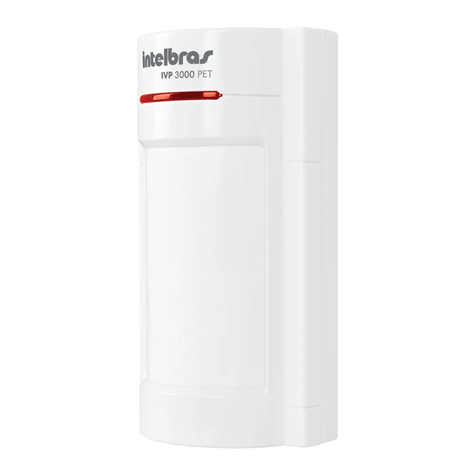
Intelbras
Intelbras IVP 3000 PET User manual
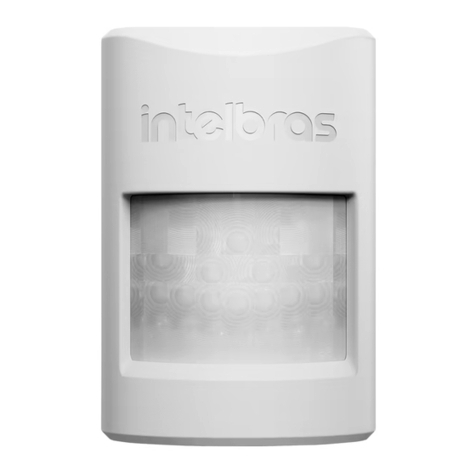
Intelbras
Intelbras IVP 1000 PET User manual
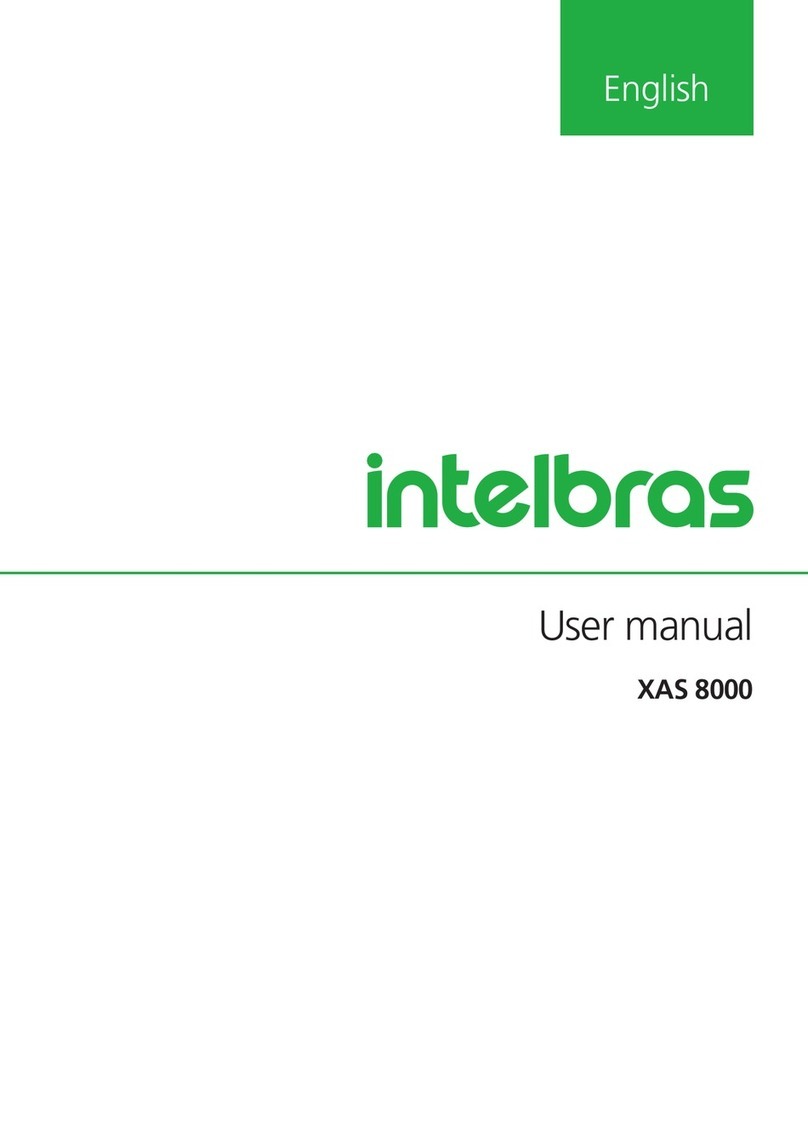
Intelbras
Intelbras XAS 8000 User manual
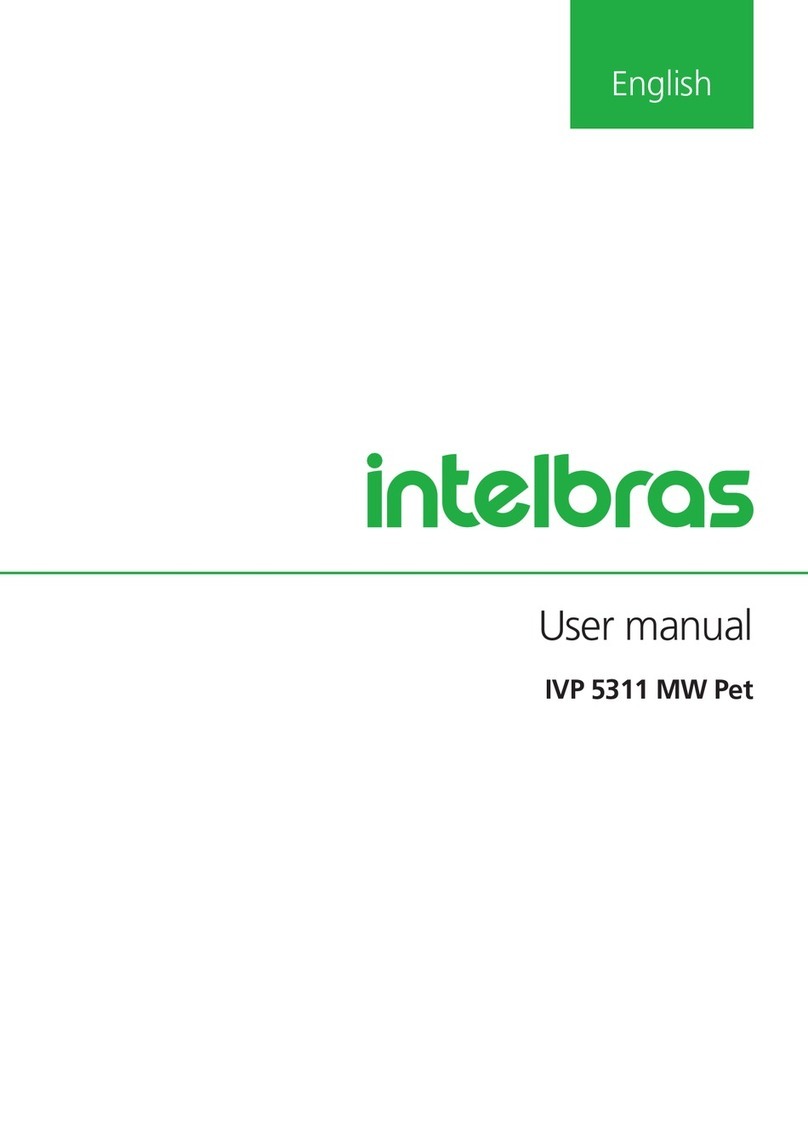
Intelbras
Intelbras VP 5311 MW Pet User manual
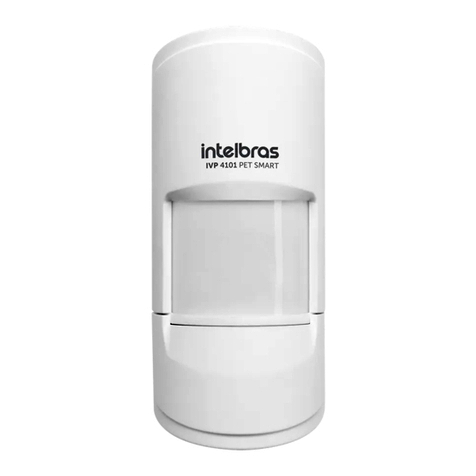
Intelbras
Intelbras IVP 4101 PET User manual
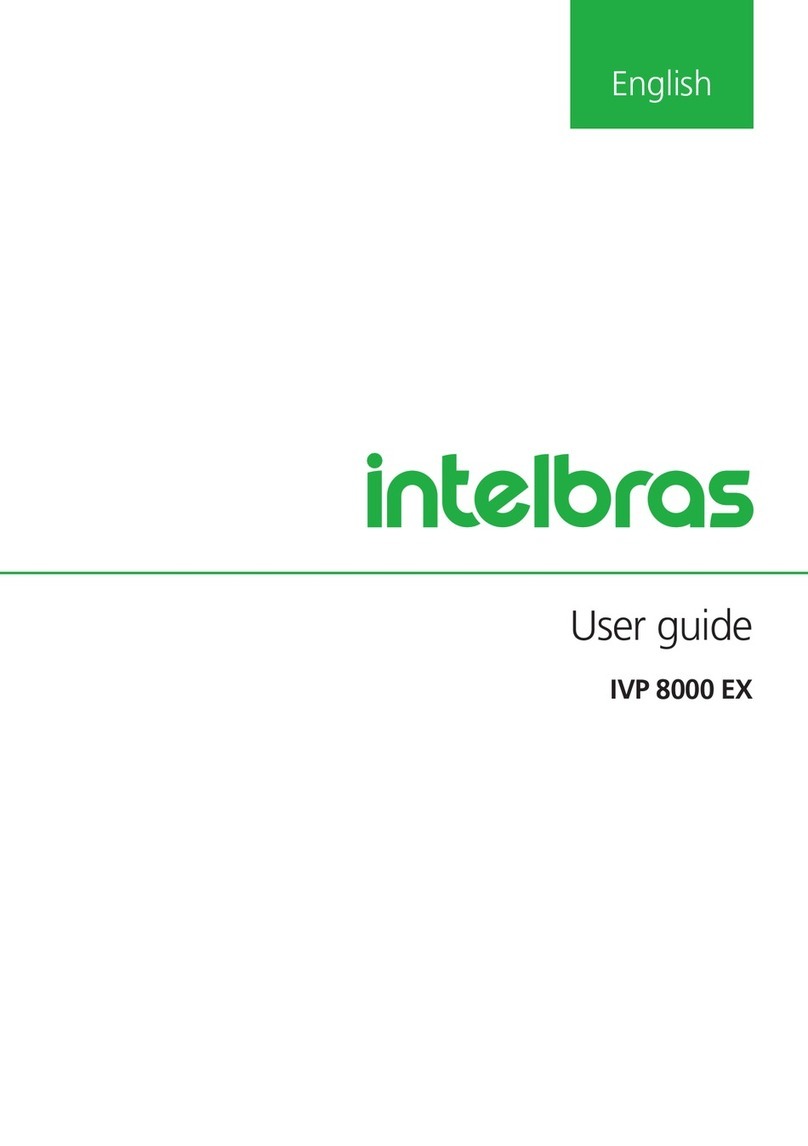
Intelbras
Intelbras IVP 8000 EX User manual

Intelbras
Intelbras IVP 1000 PET User manual
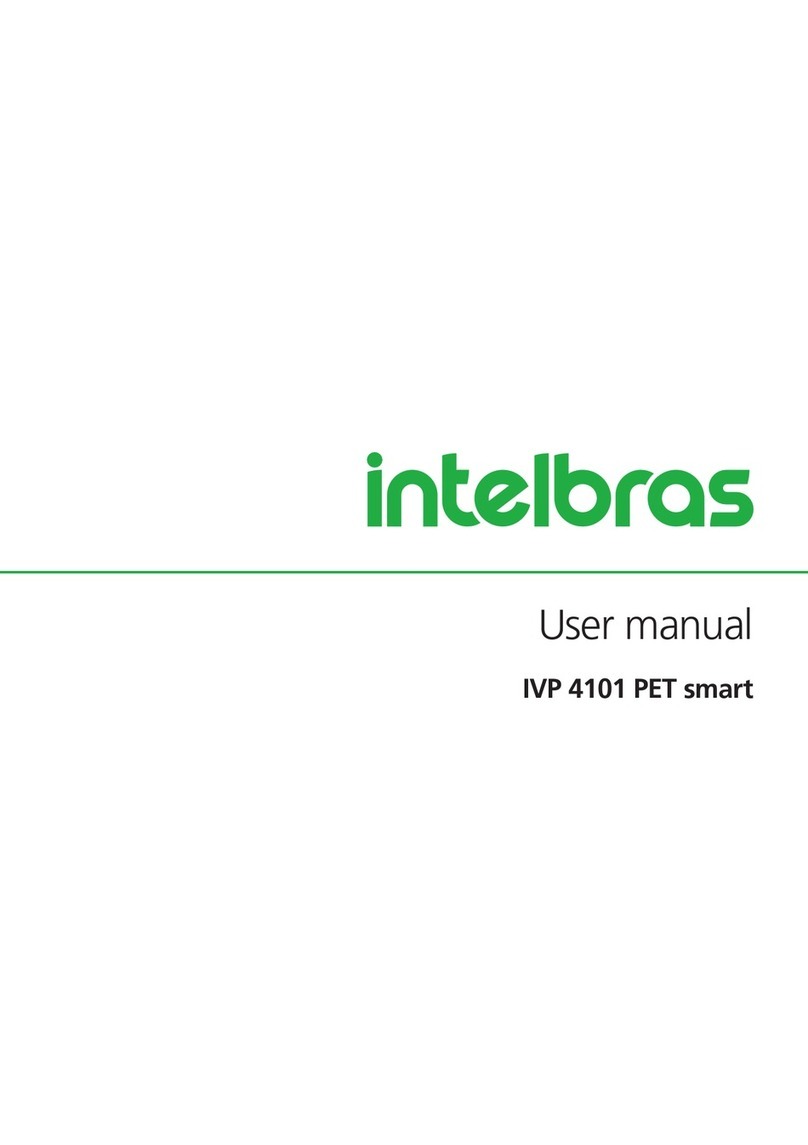
Intelbras
Intelbras IVP 4101 PET User manual

Intelbras
Intelbras IVP 8000 EX User manual
